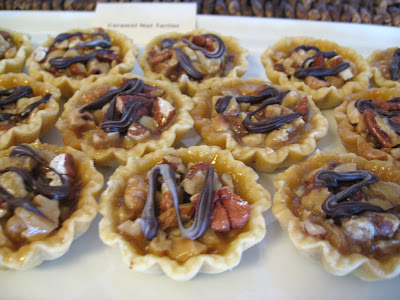Many people who stop in Concord, MA come to savor the quaint New England town that grew out of that one single, earth-shattering incident when a few men said they had had enough and stood their ground to be pushed no more by what they saw as a tyranny over their spirit. One April 19, 1775 , near the tiny village of Concord, farmers and tradesmen stood firm against British soldiers, and knowingly or not forever renounced their name colonist.
Browsing the artisan shops, sipping coffee in any one of several little cafes, the reason they are there now, sitting, browsing, sipping, lies buried around them. The three cemeteries of Concord describe and define not just the village or a peculiar and particular way of life, but much more: they define us as a nation, what we stood for, struggled for and continually hope for.
Old Hill Burying Ground
On the hillside overlooking Concord’s Monument Square is the oldest of the three cemeteries, the Old Hill Burying Ground. Comprised of nearly 500 graves Old Hill was the original burying ground for Concord residents after securing their settlement in 1635 (although the earliest existing stone is dated 1677).
"On this hill
the Settlers of Concord
built their Meeting House
near which they were buried
on the southern slope of the ridge
were their Dwellings during
the first winter
below it they laid out
their first Road and
on the summit stood the
Liberty Pole of the Revolution"
The entrance is from Monument Square through the gate between St. Bernard’s Church and the "brick-end" house. According to local history, the burying ground was located was on land that could not be farmed, and because of its height, it was the first area to thaw in the spring. This thawing allowed for early burial of those who died during the winter and waited silently for a place in the warm earth.
Of the nearly 500 burial markers in Old Hill, the oldest belongs to Joseph Merriam who died April 20, 1677.
Of interest, is the grave of Major John Buttrick who led the fight at the North Bridge and died 16 years later, on May 16, 1791. His son, buried in the same family plot, was at the bridge as a fifer. Old Hill also contains the graves of 40 other veterans of the Revolution.
For more information visit the
Old Hill Burying Ground page on the Concord City website.
Sleepy Hollow
Concord's largest cemetery with some 10,000 gravesites, is located one block east of Monument Square, on Bedford Street. One of the first "pastoral" cemeteries in the United States, Sleepy Hollow is listed in the National Register of Historic Places. Two of the most visited areas are "Authors Ridge" and the Melvin Memorial.
"Mourning Victory," commonly known as the Melvin Memorial was and commissioned by James Melvin in memory of his three brothers who died during the Civil War, was created by his boyhood friend, Daniel Chester French. Mr. French who also designed the Minuteman Statue at Concord's North Bridge and the Lincoln Statue in Washington's D.C.'s Lincoln Memorial. French is himself buried nearby, on the ridge directly behind the monument.
To the right of the Melvin Memorial, up a short stretch of road lies a hollow, on the far side of which is "Authors Ridge." Here you will find the graves of Henry Thoreau, Nathaniel Hawthorne, Ralph Waldo Emerson, and Louisa May Alcott and her father, Bronson Alcott. Each is buried in a family plot and marked with modest stones. Hawthorne's marker, in keeping with his personal reserve, bears only his last name, while Emerson created his own epitaph: "The passive master lent his hand to the vast soul which o'er him planned." (from his poem, The Problem).

Emerson's stone faces a large boulder at the base of the hill, which covers the resting place of Ephraim Wales Bull, the originator of the celebrated Concord Grape. At the Alcott plot, Ms. Alcott is surrounded by her father, mother and sisters, whom she made famous in Little Women. Except for Louisa May, the Alcott stones bear only the occupants’ initials. Tragedy hovers here. Bronson Alcott died on March 4, 1888, and Louisa May, gravely ill with pneumonia and shaken by his passage, died two days later. Both were buried on the same day later in the spring when the ground had thawed sufficiently.
Visit the cemetery website:
http://www.concordma.gov/Pages/ConcordMA_Cemetery/sleepy
South Burying Place
A block and a half down Main Street from Old Hill Burying Ground, at the intersection of Keyes Road, is the South Burying Place, also known as the "Main Street Burying Ground." Comprised of some 300 graves, this small burial site dates back to the late 17th century. According to local history, this site was opened "to accommodate people living on the south side of a mill pond dam where Main Street is now." Most of the headstones are replacements following the destruction of the originals during the 1938 hurricane.
 |
| Main street to the right |





















 Brittany is known for many things: incredible desserts (and I'm thinking of Paris-Brest here), wonderful food (crepes and galette come to mind), and some of the world's most extensive megalith formations. Thousands of stones arranged in passage graves, tumulus mounds and the incredible alignments found in Carnac, where we stayed in early January of 2011.
Brittany is known for many things: incredible desserts (and I'm thinking of Paris-Brest here), wonderful food (crepes and galette come to mind), and some of the world's most extensive megalith formations. Thousands of stones arranged in passage graves, tumulus mounds and the incredible alignments found in Carnac, where we stayed in early January of 2011.